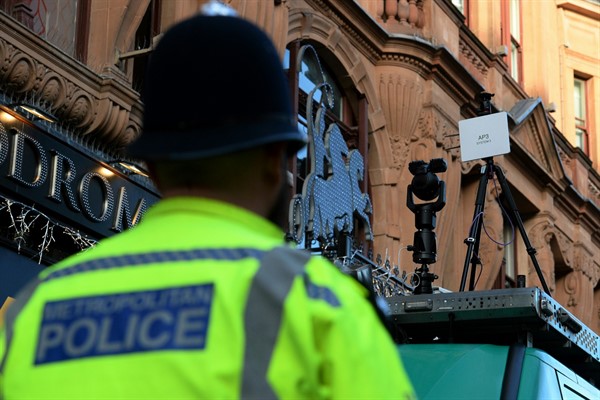The growing prevalence of facial recognition technology in authoritarian countries like Russia and the United Arab Emirates, which use it to monitor activists and suppress dissent, has raised increasing alarm among human rights advocates. Perhaps the most egregious example is in China, where the government has used facial recognition technology to racially profile Uighurs, a predominantly Muslim ethnic minority that is concentrated in Xinjiang province, and forcibly lock them up in internment camps. But authoritarian countries are not alone: This technology is now being harnessed for law enforcement and surveillance purposes in many democracies.
Last month, for example, India’s government announced it had used facial recognition to identify over 1,000 people who participated in deadly anti-Muslim riots in New Delhi in February. “This is a software. It does not see faith. It does not see clothes. It only sees the face and through the face the person is caught,” said the Indian home minister, Amit Shah. Meanwhile, in the United States, the American Civil Liberties Union recently sued the Department of Homeland Security over its secretive use of facial recognition at airports.
Facial recognition is only one element of a growing trend toward mass surveillance of populations around the world, driven by companies that specialize in emerging technologies like artificial intelligence. But democratically elected governments have an obligation to ensure proper safeguards around the use of these technologies. Such safeguards would prevent overreach by law enforcement agencies and ensure that powerful tools like facial recognition do not infringe on civil rights.

